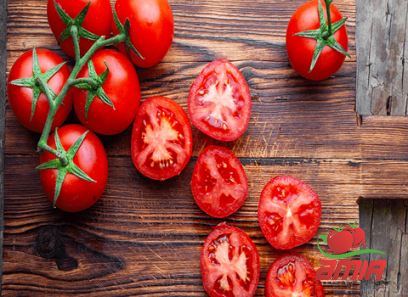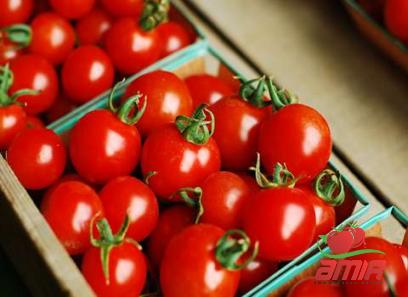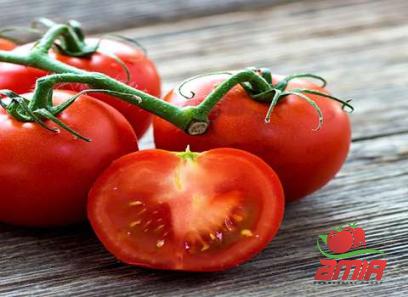Tomato paste is a versatile ingredient that adds depth, richness, and flavor to a wide variety of dishes. While store-bought tomato paste is convenient, making your own at home can be a rewarding and budget-friendly alternative. In this comprehensive guide, we will explore the step-by-step process of making DIY tomato paste, its benefits, storage tips, and creative ways to use it in your cooking. The Benefits of DIY Tomato Paste: Making your own tomato paste allows you to control the quality of ingredients used and customize the flavor to suit your preferences. Store-bought tomato paste often contains added sugars, preservatives, and artificial flavors, which can detract from the natural taste of the tomatoes. By choosing fresh, ripe tomatoes and making your own paste, you can enjoy a pure and flavorful condiment that enhances the taste of your dishes. Additionally, DIY tomato paste is a cost-effective option, especially if you have an abundance of ripe tomatoes during the summer months. Making a batch of tomato paste at home can help reduce food waste and save money in the long run.

.
 It also allows you to experiment with different tomato varieties and create a paste that is tailored to your culinary needs. How to Make DIY Tomato Paste: To make your own tomato paste, start by selecting ripe and flavorful tomatoes. Roma tomatoes are commonly used for making tomato paste due to their rich flavor and low water content. Wash the tomatoes thoroughly and remove any stems or blemishes. Next, blanch the tomatoes by scoring a small “X” on the bottom of each tomato and plunging them into boiling water for 30-60 seconds. Transfer the blanched tomatoes to an ice bath to stop the cooking process, then peel off the skins and dice the tomatoes. In a large saucepan, cook the diced tomatoes over low heat, stirring occasionally to prevent sticking. As the tomatoes break down, they will release their natural juices and begin to thicken. Continue cooking the tomatoes until they have reduced by at least half and reached a thick, paste-like consistency. For a smoother texture, you can puree the cooked tomatoes in a blender or food processor before transferring them to a clean jar or container. Allow the tomato paste to cool completely before sealing and storing it in the refrigerator or freezer. Storage Tips for DIY Tomato Paste: Homemade tomato paste can be stored in the refrigerator for up to one week or frozen for extended storage. To freeze tomato paste, portion it into ice cube trays or freezer-safe containers for easy use in future recipes. Frozen tomato paste will retain its flavor and quality for several months, making it a convenient pantry staple. When using frozen tomato paste, simply thaw the desired amount in the refrigerator or at room temperature before adding it to your dishes. Avoid refreezing thawed tomato paste to maintain its freshness and flavor. Creative Ways to Use DIY Tomato Paste: DIY tomato paste is a versatile ingredient that can elevate a wide range of dishes, from soups and stews to pasta sauces and marinades. Here are some creative ways to incorporate homemade tomato paste into your cooking: 1. Pasta Sauce: Add a spoonful of tomato paste to your favorite pasta sauce recipe for added depth and richness. The concentrated flavor of tomato paste enhances the overall taste of the sauce and pairs well with herbs, garlic, and parmesan cheese. 2. Pizza Sauce: Spread a thin layer of tomato paste on pizza dough as a flavorful base for your favorite toppings. The intense tomato flavor of homemade paste will shine through, creating a delicious and satisfying pizza. 3. Soup and Stew: Stir tomato paste into soups and stews for a hearty and robust flavor.
It also allows you to experiment with different tomato varieties and create a paste that is tailored to your culinary needs. How to Make DIY Tomato Paste: To make your own tomato paste, start by selecting ripe and flavorful tomatoes. Roma tomatoes are commonly used for making tomato paste due to their rich flavor and low water content. Wash the tomatoes thoroughly and remove any stems or blemishes. Next, blanch the tomatoes by scoring a small “X” on the bottom of each tomato and plunging them into boiling water for 30-60 seconds. Transfer the blanched tomatoes to an ice bath to stop the cooking process, then peel off the skins and dice the tomatoes. In a large saucepan, cook the diced tomatoes over low heat, stirring occasionally to prevent sticking. As the tomatoes break down, they will release their natural juices and begin to thicken. Continue cooking the tomatoes until they have reduced by at least half and reached a thick, paste-like consistency. For a smoother texture, you can puree the cooked tomatoes in a blender or food processor before transferring them to a clean jar or container. Allow the tomato paste to cool completely before sealing and storing it in the refrigerator or freezer. Storage Tips for DIY Tomato Paste: Homemade tomato paste can be stored in the refrigerator for up to one week or frozen for extended storage. To freeze tomato paste, portion it into ice cube trays or freezer-safe containers for easy use in future recipes. Frozen tomato paste will retain its flavor and quality for several months, making it a convenient pantry staple. When using frozen tomato paste, simply thaw the desired amount in the refrigerator or at room temperature before adding it to your dishes. Avoid refreezing thawed tomato paste to maintain its freshness and flavor. Creative Ways to Use DIY Tomato Paste: DIY tomato paste is a versatile ingredient that can elevate a wide range of dishes, from soups and stews to pasta sauces and marinades. Here are some creative ways to incorporate homemade tomato paste into your cooking: 1. Pasta Sauce: Add a spoonful of tomato paste to your favorite pasta sauce recipe for added depth and richness. The concentrated flavor of tomato paste enhances the overall taste of the sauce and pairs well with herbs, garlic, and parmesan cheese. 2. Pizza Sauce: Spread a thin layer of tomato paste on pizza dough as a flavorful base for your favorite toppings. The intense tomato flavor of homemade paste will shine through, creating a delicious and satisfying pizza. 3. Soup and Stew: Stir tomato paste into soups and stews for a hearty and robust flavor.
..
 Tomato paste adds complexity to broths and gravies, making them more savory and satisfying. 4. Marinade: Create a quick and flavorful marinade for meats and vegetables by combining tomato paste with olive oil, garlic, and herbs. The acidity of tomato paste helps tenderize proteins and infuse them with rich flavor. 5. Dips and Spreads: Mix tomato paste with Greek yogurt or cream cheese to create a tangy dip or spread for crackers, bread, or vegetables. The bold flavor of tomato paste adds a zesty kick to traditional dips and spreads. Conclusion: Making your own DIY tomato paste is a rewarding and sustainable way to enjoy the flavors of fresh, ripe tomatoes year-round. By following these simple steps and storage tips, you can create a versatile condiment that enhances a wide variety of dishes. Experiment with different tomato varieties and seasonings to customize your tomato paste to suit your taste preferences. Whether you use it as a base for sauces, soups, or marinades, homemade tomato paste is sure to add depth and richness to your culinary creations. Start making your own tomato paste today and experience the difference in taste and quality that fresh, homemade ingredients can bring to your cooking. Additional Ways to Use DIY Tomato Paste: 6. Curries and Tagines: Tomato paste is a common ingredient in many curry and tagine recipes, adding a rich and savory undertone to the dish. Try incorporating homemade tomato paste into your favorite curry or tagine for a boost of flavor. 7. Homemade Ketchup: Tired of store-bought ketchup with added sugars and preservatives? Make your own version using tomato paste as the base. Combine tomato paste with vinegar, sweeteners like honey or maple syrup, and seasonings to create a flavorful homemade ketchup. 8. Tomato-Based Salsas: Add a spoonful of tomato paste to your homemade salsa for a concentrated tomato flavor. The thick consistency of tomato paste helps bind the ingredients together and enhances the overall taste of the salsa. 9. BBQ Sauce: Create a smoky and tangy BBQ sauce using tomato paste as a key ingredient. Combine tomato paste with molasses, vinegar, spices, and your favorite seasonings to make a flavorful sauce for grilling and barbecuing. 10. Tomato Risotto: Stir tomato paste into your risotto base for a subtle tomato flavor that complements the creamy rice dish. Tomato paste adds depth and richness to the risotto, making it a comforting and satisfying meal. 11. Shakshuka: This Middle Eastern dish combines eggs poached in a spiced tomato sauce, and tomato paste can elevate the flavors even more. Add a dollop of tomato paste to the sauce for a concentrated tomato taste that pairs beautifully with the runny eggs.
Tomato paste adds complexity to broths and gravies, making them more savory and satisfying. 4. Marinade: Create a quick and flavorful marinade for meats and vegetables by combining tomato paste with olive oil, garlic, and herbs. The acidity of tomato paste helps tenderize proteins and infuse them with rich flavor. 5. Dips and Spreads: Mix tomato paste with Greek yogurt or cream cheese to create a tangy dip or spread for crackers, bread, or vegetables. The bold flavor of tomato paste adds a zesty kick to traditional dips and spreads. Conclusion: Making your own DIY tomato paste is a rewarding and sustainable way to enjoy the flavors of fresh, ripe tomatoes year-round. By following these simple steps and storage tips, you can create a versatile condiment that enhances a wide variety of dishes. Experiment with different tomato varieties and seasonings to customize your tomato paste to suit your taste preferences. Whether you use it as a base for sauces, soups, or marinades, homemade tomato paste is sure to add depth and richness to your culinary creations. Start making your own tomato paste today and experience the difference in taste and quality that fresh, homemade ingredients can bring to your cooking. Additional Ways to Use DIY Tomato Paste: 6. Curries and Tagines: Tomato paste is a common ingredient in many curry and tagine recipes, adding a rich and savory undertone to the dish. Try incorporating homemade tomato paste into your favorite curry or tagine for a boost of flavor. 7. Homemade Ketchup: Tired of store-bought ketchup with added sugars and preservatives? Make your own version using tomato paste as the base. Combine tomato paste with vinegar, sweeteners like honey or maple syrup, and seasonings to create a flavorful homemade ketchup. 8. Tomato-Based Salsas: Add a spoonful of tomato paste to your homemade salsa for a concentrated tomato flavor. The thick consistency of tomato paste helps bind the ingredients together and enhances the overall taste of the salsa. 9. BBQ Sauce: Create a smoky and tangy BBQ sauce using tomato paste as a key ingredient. Combine tomato paste with molasses, vinegar, spices, and your favorite seasonings to make a flavorful sauce for grilling and barbecuing. 10. Tomato Risotto: Stir tomato paste into your risotto base for a subtle tomato flavor that complements the creamy rice dish. Tomato paste adds depth and richness to the risotto, making it a comforting and satisfying meal. 11. Shakshuka: This Middle Eastern dish combines eggs poached in a spiced tomato sauce, and tomato paste can elevate the flavors even more. Add a dollop of tomato paste to the sauce for a concentrated tomato taste that pairs beautifully with the runny eggs.
…
 12. Tomato Vinaigrette: Make a zesty and tangy tomato vinaigrette by combining tomato paste with olive oil, vinegar, herbs, and seasonings. This versatile dressing can be drizzled over salads, grilled vegetables, or roasted meats for added flavor. 13. Tomato Butter: Mix tomato paste with softened butter and herbs to create a savory spread for bread, vegetables, or grilled meats. Tomato butter adds a burst of flavor to dishes and can be used as a condiment or finishing touch. 14. Tomato Glaze: Combine tomato paste with balsamic vinegar, honey, and spices to create a sweet and tangy glaze for roasted vegetables, meats, or tofu. Brush the glaze over the food during cooking to caramelize and enhance the flavors. The possibilities are endless when it comes to using DIY tomato paste in your culinary creations. Get creative in the kitchen and experiment with different recipes and flavor combinations to discover new ways to enjoy the rich and intense taste of homemade tomato paste. Tips for Success: 1. Choose ripe and flavorful tomatoes for the best results. Look for tomatoes that are deep red in color and have a rich aroma. 2. Adjust the cooking time to achieve the desired thickness and consistency of the tomato paste. The longer you cook the tomatoes, the thicker the paste will become. 3. Store homemade tomato paste in airtight containers in the refrigerator or freezer to maintain its freshness and quality. 4. Label and date the containers of tomato paste for easy identification and tracking of storage time. 5. Consider adding herbs, spices, or garlic to the tomato paste for additional flavor variations. Experiment with different seasonings to create unique and personalized tomato paste blends. In conclusion, making DIY tomato paste at home is a rewarding and flavorful endeavor that allows you to enjoy the fresh taste of tomatoes year-round. Whether you use it as a base for sauces, soups, marinades, or dips, homemade tomato paste adds depth and richness to your cooking. With these tips, creative ideas, and recipes, you can start making your own tomato paste and explore the diverse culinary possibilities it offers. Embrace the art of homemade cooking and savor the delicious flavors of DIY tomato paste in your favorite dishes.
12. Tomato Vinaigrette: Make a zesty and tangy tomato vinaigrette by combining tomato paste with olive oil, vinegar, herbs, and seasonings. This versatile dressing can be drizzled over salads, grilled vegetables, or roasted meats for added flavor. 13. Tomato Butter: Mix tomato paste with softened butter and herbs to create a savory spread for bread, vegetables, or grilled meats. Tomato butter adds a burst of flavor to dishes and can be used as a condiment or finishing touch. 14. Tomato Glaze: Combine tomato paste with balsamic vinegar, honey, and spices to create a sweet and tangy glaze for roasted vegetables, meats, or tofu. Brush the glaze over the food during cooking to caramelize and enhance the flavors. The possibilities are endless when it comes to using DIY tomato paste in your culinary creations. Get creative in the kitchen and experiment with different recipes and flavor combinations to discover new ways to enjoy the rich and intense taste of homemade tomato paste. Tips for Success: 1. Choose ripe and flavorful tomatoes for the best results. Look for tomatoes that are deep red in color and have a rich aroma. 2. Adjust the cooking time to achieve the desired thickness and consistency of the tomato paste. The longer you cook the tomatoes, the thicker the paste will become. 3. Store homemade tomato paste in airtight containers in the refrigerator or freezer to maintain its freshness and quality. 4. Label and date the containers of tomato paste for easy identification and tracking of storage time. 5. Consider adding herbs, spices, or garlic to the tomato paste for additional flavor variations. Experiment with different seasonings to create unique and personalized tomato paste blends. In conclusion, making DIY tomato paste at home is a rewarding and flavorful endeavor that allows you to enjoy the fresh taste of tomatoes year-round. Whether you use it as a base for sauces, soups, marinades, or dips, homemade tomato paste adds depth and richness to your cooking. With these tips, creative ideas, and recipes, you can start making your own tomato paste and explore the diverse culinary possibilities it offers. Embrace the art of homemade cooking and savor the delicious flavors of DIY tomato paste in your favorite dishes.










Your comment submitted.